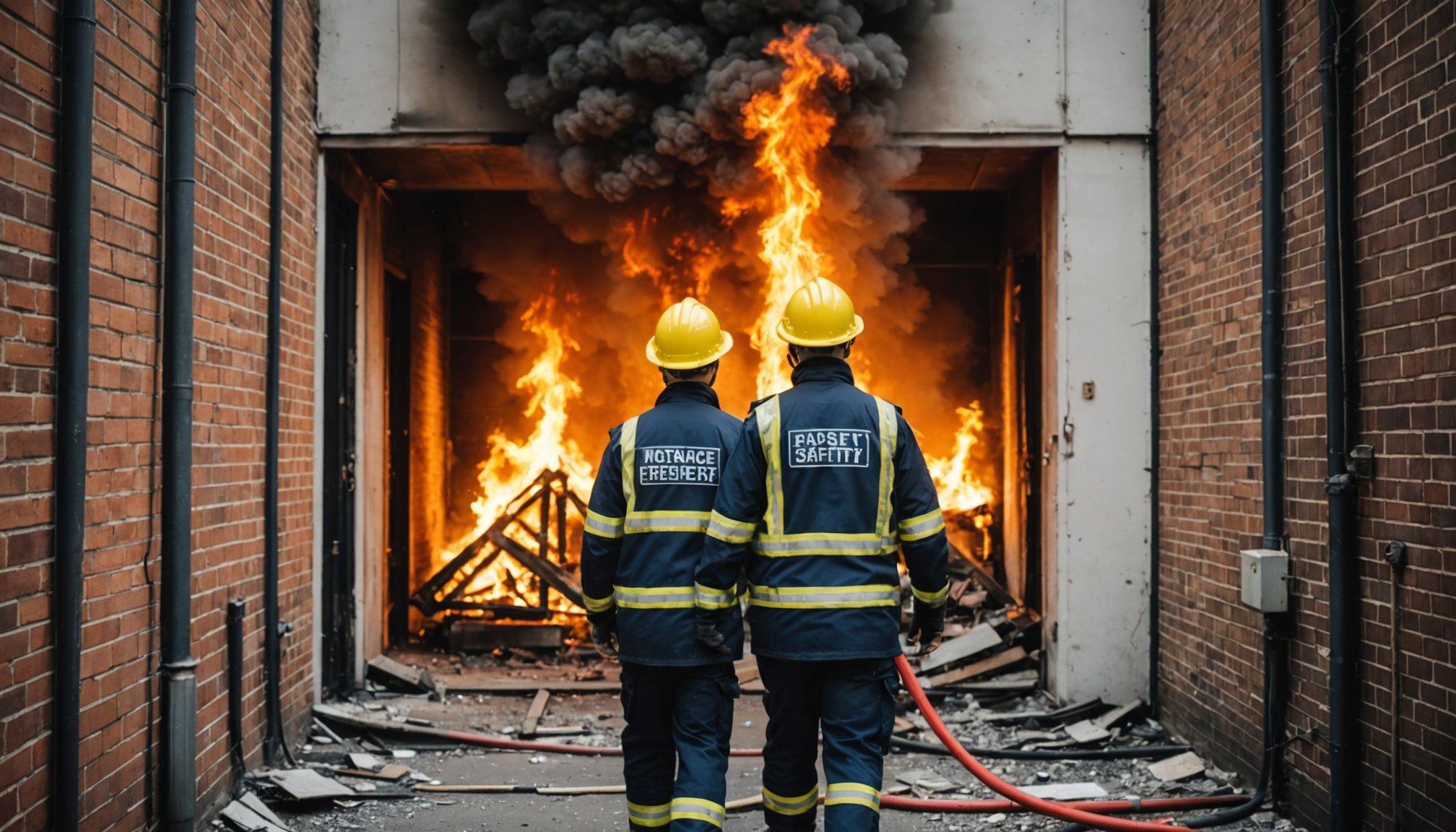Fire safety compliance is not just a legal obligation for UK property owners; it's essential for protecting lives and investments. This comprehensive guide will equip you with the knowledge to navigate fire safety regulations effectively. From understanding local legislation to implementing practical safety measures, learn how to safeguard your property and the people within it. Discover tailored strategies that consider both property type and tenant needs, ensuring your approach is both compliant and effective. Embrace fire safety as an integral part of property management, and empower yourself to create a safer environment.
Understanding Fire Safety Compliance in the UK
Navigating fire safety laws in the UK is crucial for property owners and managers. These regulations are designed to ensure the safety and well-being of tenants, as well as to maintain property value. The cornerstone of UK fire safety legislation is the Regulatory Reform (Fire Safety) Order 2005, which outlines the responsibilities of property owners and managers in ensuring fire safety compliance.
A découvrir également : Unlocking Real Estate Potential: How AI-Driven Predictive Analytics Enhances Investment Strategies in London
Property owners must conduct regular fire risk assessments, identifying potential hazards and implementing measures to mitigate them. This includes maintaining fire detection systems, ensuring clear emergency exits, and providing adequate fire-fighting equipment. Compliance with these UK regulations not only safeguards tenants but also enhances the property's appeal and value.
Property owner responsibilities extend to educating tenants on fire safety protocols and ensuring that all fire safety equipment is regularly inspected and maintained. Failure to comply with these regulations can result in severe penalties, including fines and legal action.
En parallèle : How Could the Introduction of Digital Land Registry Services Transform UK Property Transactions?
The importance of fire safety compliance cannot be overstated. It serves as a protective measure for both tenants and property investments. By adhering to these regulations, property owners can foster a safe living environment, reduce risks, and enhance the overall value of their properties.
Legal Requirements for Fire Safety
Understanding the legal obligations tied to fire safety is integral for property owners in the UK. These obligations stem from a robust framework of fire safety regulations designed to protect both lives and property.
Regulatory Framework
The UK's regulatory framework for fire safety is comprehensive, ensuring that property owners adhere to established UK fire safety standards. These standards are not just guidelines but enforceable laws that require regular compliance checks.
Fire Safety Order 2005
Central to these regulations is the Regulatory Reform (Fire Safety) Order 2005. This order mandates property owners to conduct thorough fire risk assessments and implement necessary safety measures. Compliance involves maintaining functional fire detection systems, ensuring accessible emergency exits, and having adequate fire-fighting equipment on-site.
Role of Local Authorities
Local authorities play a crucial role in enforcing these fire safety regulations. They conduct inspections to ensure compliance with the Fire Safety Order 2005. Property owners may face penalties if they fail to meet the required standards. Local authorities provide guidance and support, helping property owners understand their legal obligations and the importance of adhering to UK fire safety standards. Regular inspections and adherence to these standards are vital for maintaining a safe environment and avoiding legal repercussions.
Compliance Checklists for Property Owners
To ensure adherence to fire safety regulations, property owners must utilise comprehensive compliance checklists. These checklists serve as essential tools in maintaining safety standards and preventing potential hazards.
Essential Elements of a Compliance Checklist
A thorough compliance checklist includes several critical elements. It should cover the inspection of fire detection systems, the accessibility of emergency exits, and the availability of fire-fighting equipment. Regular checks on emergency lighting and signage are also vital. These elements ensure that all safety measures are functional and meet the required standards.
Conducting Regular Fire Safety Audits
Regular fire safety audits are crucial for identifying potential risks and ensuring compliance. These audits involve a systematic examination of the property to assess fire safety measures. Property owners should schedule audits periodically and after any significant changes to the premises. Such proactive measures help in maintaining a safe environment and avoiding legal issues.
Documentation and Record-Keeping
Proper documentation and record-keeping are indispensable for demonstrating compliance. Property owners should maintain detailed records of all inspections, audits, and maintenance activities. This documentation not only supports compliance efforts but also provides evidence in case of inspections by local authorities. Keeping accurate records ensures that property owners can swiftly address any compliance concerns that may arise.
Best Practices for Fire Safety Management
Effective fire safety management is essential for safeguarding both lives and properties. It begins with conducting thorough fire risk assessments, a process that identifies potential hazards and evaluates existing safety measures. These assessments should be carried out regularly and updated whenever there are significant changes to the property or its use.
Implementing comprehensive safety training for both staff and tenants is another critical component. Training should cover emergency procedures, the use of fire-fighting equipment, and evacuation plans. This ensures that everyone knows how to respond in the event of a fire, reducing panic and confusion.
Regular maintenance and testing of fire safety equipment is also vital. This includes checking fire alarms, extinguishers, and emergency lighting systems to ensure they are in working order. Equipment should be tested according to the manufacturer's guidelines and any faults should be addressed immediately to maintain functionality.
By integrating these practices into a cohesive fire safety management plan, property owners can enhance safety and compliance. This proactive approach not only protects occupants but also preserves property integrity, offering peace of mind to all involved.
Resources and Case Studies
Navigating fire safety compliance can be daunting, but numerous fire safety resources are available to assist property owners. These resources offer valuable guidance and support, helping to ensure safety and compliance.
Useful Resources for Property Owners
Property owners can access a wealth of fire safety resources from both government and non-government organizations. The UK Government's Fire Safety Advice Centre provides comprehensive guidelines and updates on regulations. The National Fire Chiefs Council offers best practices and training materials. Additionally, non-governmental organizations like the Fire Protection Association provide educational materials and risk assessment tools.
Case Studies of Successful Compliance
Examining case studies of successful compliance can provide invaluable insights. One notable example is the Grenfell Tower Inquiry, which underscored the importance of rigorous fire safety measures. Another case study involves a residential complex in Manchester that implemented advanced fire detection systems and regular tenant training, resulting in enhanced safety and compliance. These case studies highlight the effectiveness of proactive measures and continuous education.
Organizations and Support Networks
Numerous organizations and networks support property owners in their fire safety compliance efforts. The Fire Industry Association and the British Standards Institution offer networking opportunities and resources. Engaging with these organizations provides access to the latest standards and a platform for sharing best practices examples, fostering a community focused on safety and compliance.











